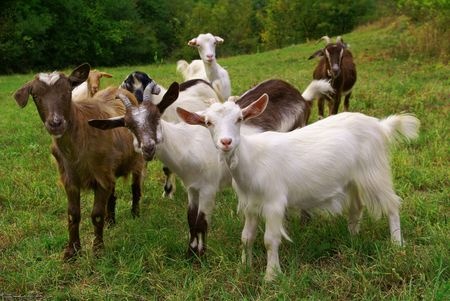Health Conditions Common in Goats
September 15, 2017
For those who have decided to raise goats, the most important things to do first are ensure they have access to water, the right kind of food, adequate, humane living space, along with similar accommodations. Once those essential needs are taken care of, however, the next step is protecting the goats' health in order to prevent any diseases common in goats from taking hold.
To be a proper goat owner, you must be fully informed about potential diseases and other medical concerns—from broken bones to lacerations, the latter of which should require having some Manuka honey on hand—to not only catch problems early but to also avoid buying goats with those problems already. Some of the concerns that follow are among the more common for goats, and any sign of them warrants a visit from the vet.
Caprine Arthritis Encephalitis (CAE)
Beginning with the worst of the bunch is CAE, which is contagious, incurable, and devastating for goat herds, often being compared to the AIDS virus for how it compromises a goat’s immune system. Goat owners must ensure they buy goats that have been tested and cleared of CAE and that they isolate any animal displaying symptoms, which include swollen joints, especially the knees, in adults; rear leg weakness in kids; weight loss; and a growing lameness to the point of paralysis.
Caseous Lymphadenitis (CL)
The simple term for this contagious, chronic disease is abscesses—pus-filled infections that form around a goat’s lymph nodes. If an abscess bursts, other goats can become infected. As with CAE, goat owners must ensure they buy CL-free animals, but they should be warned that the test for this can be inaccurate. Symptoms besides abscesses include one or more enlarged lymph nodes, lymph nodes close to the skin’s surface, and internal abscesses. Once an infected goat is isolated, a vet can lance and flush the abscesses with disinfectants.
Pinkeye
As with humans, pinkeye in goats is when the inside of an eyelid becomes inflamed, and it is just as contagious through direct contact, making it a real problem among goat herds. Known to progress rapidly, symptoms of pinkeye include red, swollen, and watery eyes, squinting, new blood vessels forming, cloudiness in the eyes’ sclera, green or yellow pus draining from the eyes, and temporary or permanent blindness in severe or untreated cases. Once an infected goat has been isolated, the eyes must be flushed using sterile saline. The vet may use an antibiotic depending on how the infection was contracted. Controlling flies is also critical for preventing the infection from spreading.
Copyright: oorka / 123RF Stock Photo


.jpg)




